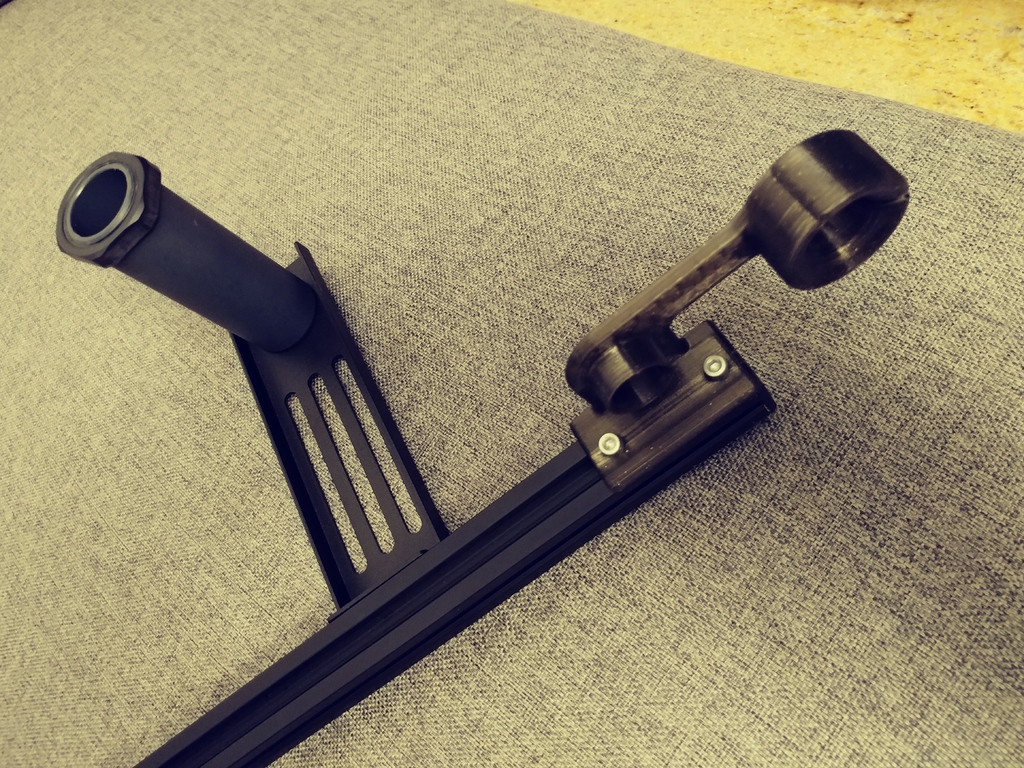
Ender 3 Filament Guide
thingiverse
Protecting the Screw Rod on Your Ender 3: A Step-by-Step Guide to Using Filament Safely The Ender 3 is a popular, affordable 3D printer that has gained a massive following among enthusiasts and professionals alike. However, one critical aspect of owning this printer is ensuring the safety and longevity of its components, particularly the screw rod, which can be easily damaged if not handled properly. Using filament on your Ender 3 requires some knowledge and caution to avoid damaging the machine or causing injuries. In this guide, we will walk you through a step-by-step process for using filament safely and effectively on your printer, while also providing some valuable tips on how to protect the screw rod from damage. **Materials Needed:** * A spool of 3D printing filament (PLA, ABS, or PETG) * A heated bed * A print platform or build plate * A set of calibration cards (optional) **Step 1: Prepare Your Ender 3** Before you start using filament on your Ender 3, make sure the printer is properly assembled and calibrated. This includes leveling the print platform, adjusting the extruder temperature, and calibrating the hotend. **Step 2: Load the Filament** To load the filament, remove any protective covers or plastic from the spool, then locate the filament input on your Ender 3. Insert the filament into the input hole, making sure it's properly seated and not twisted. **Step 3: Secure the Filament** Once you've inserted the filament, use a piece of tape to secure it in place. This will prevent it from coming loose during printing or movement. You can also use a filament clip or guide to keep the filament organized and prevent tangles. **Step 4: Calibrate the Extruder** Before starting your print job, make sure the extruder is properly calibrated. This includes setting the temperature, adjusting the bed leveling, and calibrating the hotend. Consult your Ender 3's user manual for specific instructions on how to do this. **Step 5: Print Your Design** With your filament loaded, secured, and the extruder calibrated, you're ready to start printing. Use a reliable slicing software like Cura or Simplify3D to prepare your design for print, then send it to your Ender 3. **Protecting the Screw Rod: Tips and Tricks** To prevent damage to the screw rod, follow these simple tips: * Always use a spool of filament that's specifically designed for 3D printing. * Avoid using high-temperature filaments, as they can cause the screw rod to warp or deform. * Keep the print platform level and stable to prevent the filament from moving excessively during printing. * Regularly clean and lubricate the screw rod to keep it running smoothly. By following these simple steps and tips, you'll be able to use your Ender 3 safely and effectively, while also protecting the delicate components of your printer. Happy printing!
With this file you will be able to print Ender 3 Filament Guide with your 3D printer. Click on the button and save the file on your computer to work, edit or customize your design. You can also find more 3D designs for printers on Ender 3 Filament Guide.
